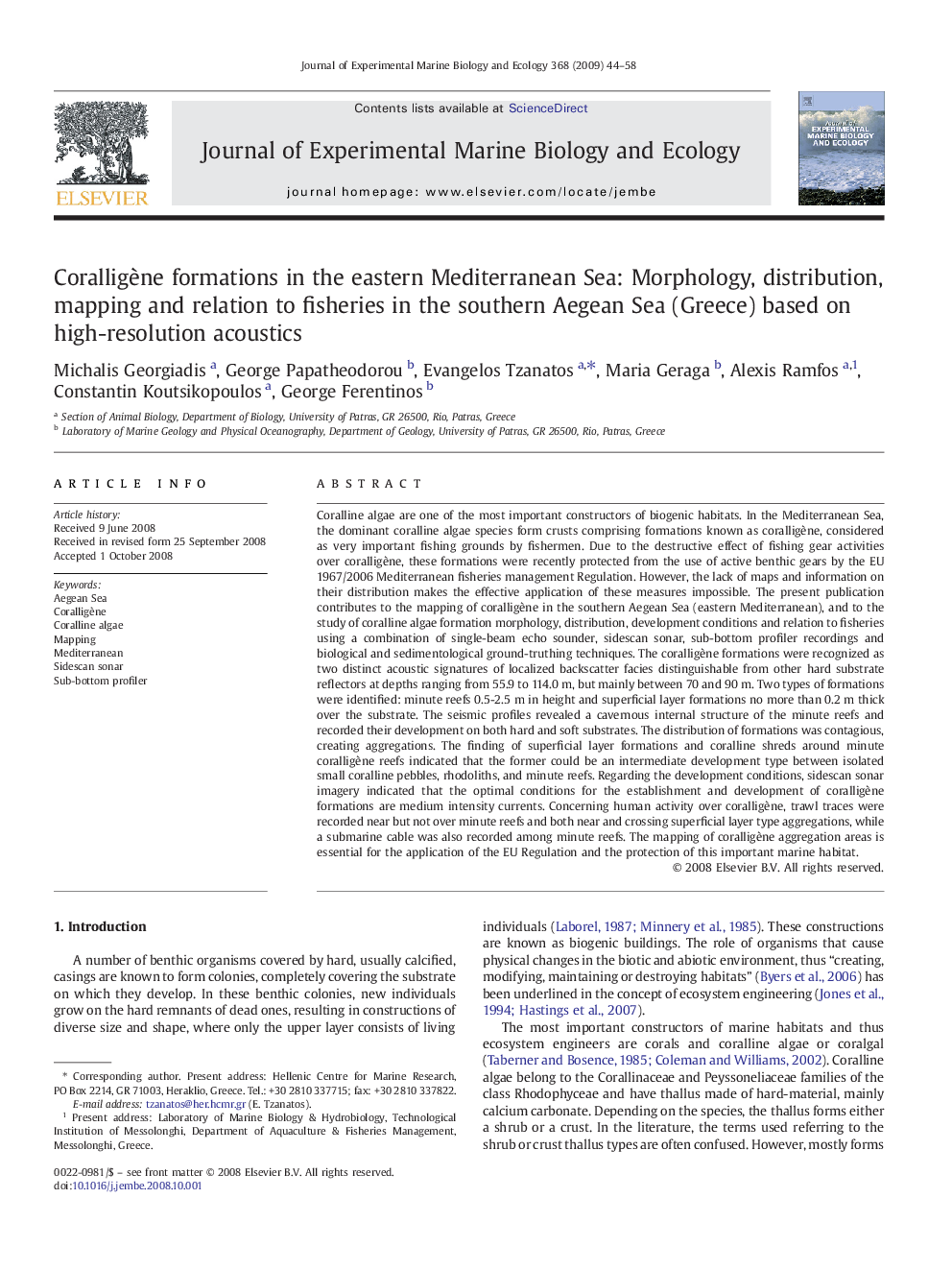| کد مقاله | کد نشریه | سال انتشار | مقاله انگلیسی | نسخه تمام متن |
|---|---|---|---|---|
| 4397049 | 1305861 | 2009 | 15 صفحه PDF | دانلود رایگان |

Coralline algae are one of the most important constructors of biogenic habitats. In the Mediterranean Sea, the dominant coralline algae species form crusts comprising formations known as coralligène, considered as very important fishing grounds by fishermen. Due to the destructive effect of fishing gear activities over coralligène, these formations were recently protected from the use of active benthic gears by the EU 1967/2006 Mediterranean fisheries management Regulation. However, the lack of maps and information on their distribution makes the effective application of these measures impossible. The present publication contributes to the mapping of coralligène in the southern Aegean Sea (eastern Mediterranean), and to the study of coralline algae formation morphology, distribution, development conditions and relation to fisheries using a combination of single-beam echo sounder, sidescan sonar, sub-bottom profiler recordings and biological and sedimentological ground-truthing techniques. The coralligène formations were recognized as two distinct acoustic signatures of localized backscatter facies distinguishable from other hard substrate reflectors at depths ranging from 55.9 to 114.0 m, but mainly between 70 and 90 m. Two types of formations were identified: minute reefs 0.5-2.5 m in height and superficial layer formations no more than 0.2 m thick over the substrate. The seismic profiles revealed a cavernous internal structure of the minute reefs and recorded their development on both hard and soft substrates. The distribution of formations was contagious, creating aggregations. The finding of superficial layer formations and coralline shreds around minute coralligène reefs indicated that the former could be an intermediate development type between isolated small coralline pebbles, rhodoliths, and minute reefs. Regarding the development conditions, sidescan sonar imagery indicated that the optimal conditions for the establishment and development of coralligène formations are medium intensity currents. Concerning human activity over coralligène, trawl traces were recorded near but not over minute reefs and both near and crossing superficial layer type aggregations, while a submarine cable was also recorded among minute reefs. The mapping of coralligène aggregation areas is essential for the application of the EU Regulation and the protection of this important marine habitat.
Journal: Journal of Experimental Marine Biology and Ecology - Volume 368, Issue 1, 15 January 2009, Pages 44–58